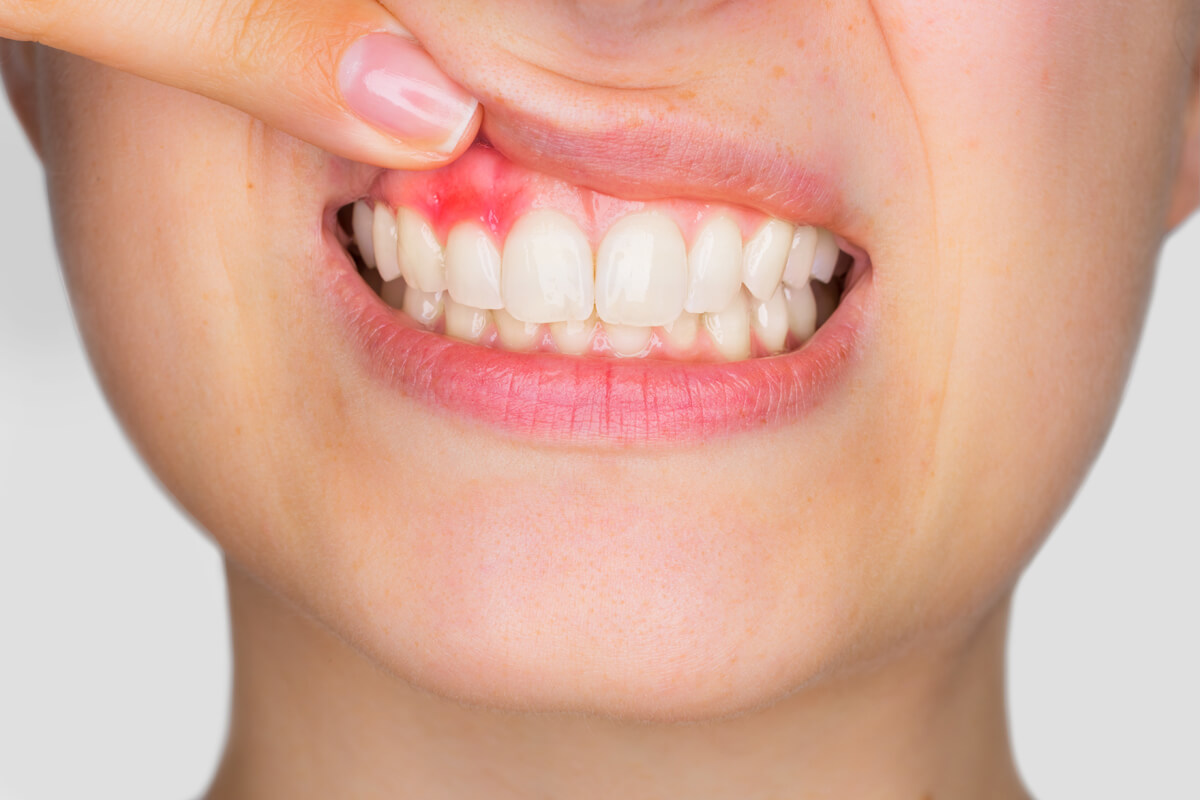Improving Your Gums and Preventing Periodontitis

Gum disease – or periodontitis – is the leading cause of tooth loss in the UK. Unfortunately, it’s also one of the most prevalent diseases with an estimated 50% of the Scottish adult population showing at least some signs of it.
So what can you do to prevent it and improve your gum health? First of all, prevention is better than cure! That means focussing on your twice daily teeth cleaning regime which is the basis of perio prevention.
Failure to do so can have serious consequences. Some aspects of the destruction caused by this disease are not reversible. The bone lost or damaged cannot naturally grow back. But we can prevent the damage progressing, and ultimately save teeth, with careful care and maintenance, and with help and treatment from our dental therapists and dentists.
So what is periodontal disease?
You may be familiar with the term gingivitis which is an early stage of gum disease caused by the buildup of plaque, a naturally occurring biofilm containing bacteria, on the tissues that surround the teeth.
Gingivitis does not always progress to periodontitis. It can be halted by meticulous, effective and regular toothbrushing and interdental cleaning (cleaning in between the teeth).
The first signs of gingivitis can be bleeding gums when brushing, together with red, swollen gum tissue. But sometimes the disease can progress with little or no symptoms. This is especially true of smokers.
If addressed effectively however, you can prevent gingivitis from progressing. There will be no lasting effects or implications with regards to bone levels, and the attachment / support that is holding the teeth in place.
But, if left undetected or untreated, the gum and the bone begin to shrink away from the tooth, creating small pockets. These pockets lend themselves to further build up of bacteria as our normal tooth brushing cannot then effectively reach the base of these pockets. The bacteria, if left undisturbed, will produce toxins and start to further break down connective tissue and bone, causing loose teeth, and ultimately tooth loss.
Poor gum health also predisposes you to cardiovascular disease, oral and colorectal cancer, gastrointestinal diseases, respiratory tract infection and pneumonia, adverse pregnancy outcomes, diabetes and insulin resistance, and Alzheimer’s disease. So your oral health is important!
Please remember that people’s susceptibility to plaque differs greatly. It is sometimes – albeit rarely – the case that we see advanced perio disease in patients who make great efforts with plaque removal at home. In these patients the smallest build up of plaque is all it takes to cause destruction. Sometimes we need specialist help to manage the disease, and in these circumstances, we will seek to refer the patient appropriately.
Prevention and the dental therapist’s role:
Our role within the dental practice is firstly to educate our patients to effectively disrupt and remove plaque biofilm at home. We guide our patients with tooth brushing direction and the introduction of interdental cleaning aids (flossing/ interdental brushes).
It is vital that the patient engages with our advice as we cannot treat advanced gum disease until our patients have reduced their plaque score.
We can routinely disrupt the biofilm by carrying out regular professional mechanical plaque removal. Previously this was carried out using ultrasonic and hand scalers, but we have recently invested in the technology to provide the more advanced guided biofilm therapy (GBT). I’ll be explaining more about this in a separate blog.
During your regular hygiene visits our therapists will monitor our patient’s engagement with advice given and plan appropriate treatment as required.
The patient’s role is to engage and clean! And, if you are a smoker, to consider smoking cessation measures. Keeping your regular hygiene appointments to allow for disruption of the biofilm and appropriate treatment is also important. This is not a single visit solution.
Treatment of Perio:
First and foremost, our therapists will help to advise with oral hygiene instruction. We aim to ensure your toothbrushing technique is effective and introduce interdental cleaning and home care of pockets present. Once you become more effective with plaque removal at home, we would expect to see a reduction of bleeding and inflammation above the gum line.
It is at this stage we can consider treatment of the pockets. This is the point where we carry out instrumentation below the gum line. This allows us to clear the root surface of plaque, calculus (tartar), and disrupt the bacteria.
This creates an environment that is cleanable and compatible with healing and we would hope to see new attachment form around the tooth.
Unfortunately, there is no quick fix for perio disease. It is very much a joint effort between you, the patient and the clinician to resolve it! It’s a slow healing progress requiring dedication from you at home, together with numerous appointments for active treatment.
But the effort well while with dramatically improved gum health, fresher breath, and much more confidence in your smile.
Written by Caitlin Jenkins, Dental Therapist at First Alba Healthcare



